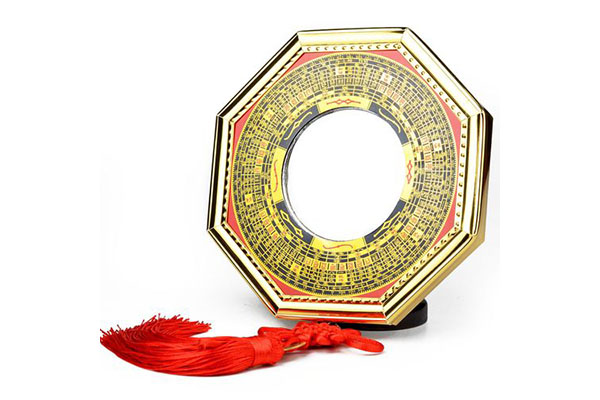What is Difference Between Concave, Convex, and Ba Gua Mirrors
Mirrors have fascinated humanity for centuries with their ability to manipulate light and create reflections. Among the various types of mirrors, concave, convex, and Ba Gua mirrors stand out due to their unique optical properties and diverse applications. In this article, we will delve into the differences between these mirrors.
Ba Gua Mirror
Definition and Characteristics:
The Ba Gua mirror is a traditional folk mirror, typically adorned with eight alternating black and white Ba Gua symbols. These mirrors are set within circular or square frames. Ba Gua mirrors are deeply rooted in Chinese folklore and beliefs, believed to possess the power to ward off evil, bring good luck, and protect households from malevolent forces.
Purpose and Applications:
Ba Gua mirrors are primarily associated with dispelling negative energies and averting misfortune. They are often hung at the entrances of homes or placed on windowsills, serving as protective talismans to shield families from harm. Carrying a Ba Gua mirror is also believed to safeguard individuals from malicious influences.
Optical Characteristics:
Ba Gua mirrors are predominantly symbolic in nature and do not exhibit significant optical characteristics. Because these mirrors are usually opaque, they lack the ability to focus light like convex and concave mirrors.

Convex Mirror
Definition and Characteristics:
A convex mirror is outwardly curved, with its reflective surface forming an arc. The defining feature of a convex mirror is that the curved side diverges light, resulting in the ability to focus scattered light rays onto a single point, creating a magnified image.
Purpose and Applications:
Convex mirrors find wide-ranging applications in fields such as automotive rearview mirrors, telescopes, and microscopes. Their ability to focus scattered light improves the visibility and clarity of distant objects.
Optical Characteristics:
The curved surface of a convex mirror causes it to converge light rays to a focal point, forming a magnified image. This phenomenon is utilized in various optical instruments.
Concave Mirror
Definition and Characteristics:
A concave mirror is inwardly curved, with its reflective surface forming a concave arc. The concave side diverges light, making it effective at spreading parallel incident light rays.
Purpose and Applications:
Concave mirrors are also extensively employed across different domains, including license plate recognition cameras in vehicles and wide-angle lenses for cameras. Their divergent nature allows for capturing a broader field of view.
Optical Characteristics:
The concave surface of this mirror disperses incoming light rays, enabling a wider field of vision compared to flat or convex mirrors.
Conclusion
Ba Gua mirrors, convex mirrors, and concave mirrors are distinct mirror types with varying optical properties and applications. Ba Gua mirrors hold cultural significance, offering protection against negative forces. Convex mirrors focus scattered light, creating magnified images, while concave mirrors disperse parallel light, broadening the observable area. These mirrors play pivotal roles in diverse fields, showcasing the ingenious application of their optical attributes.
Post Comment
You must be logged in to post a comment.